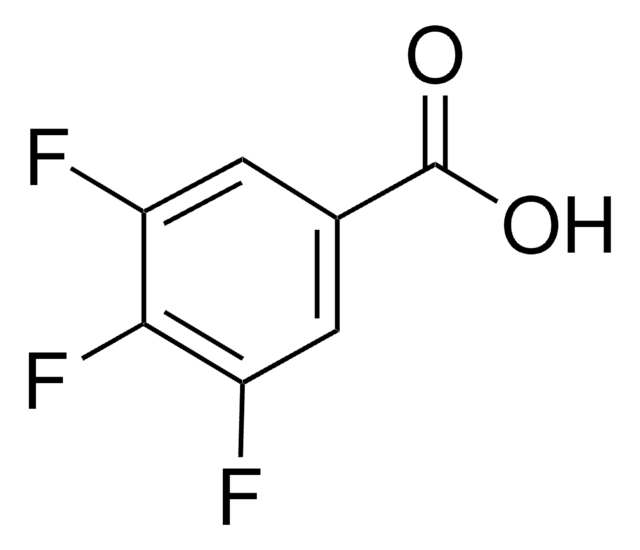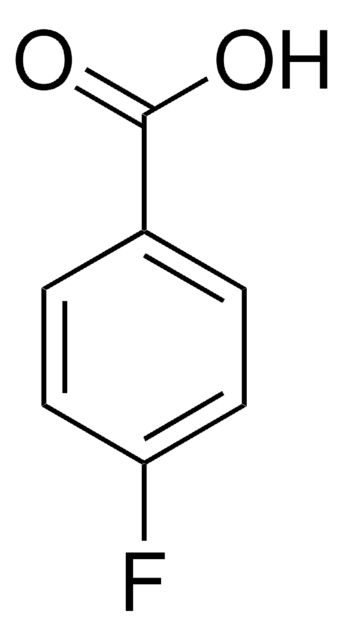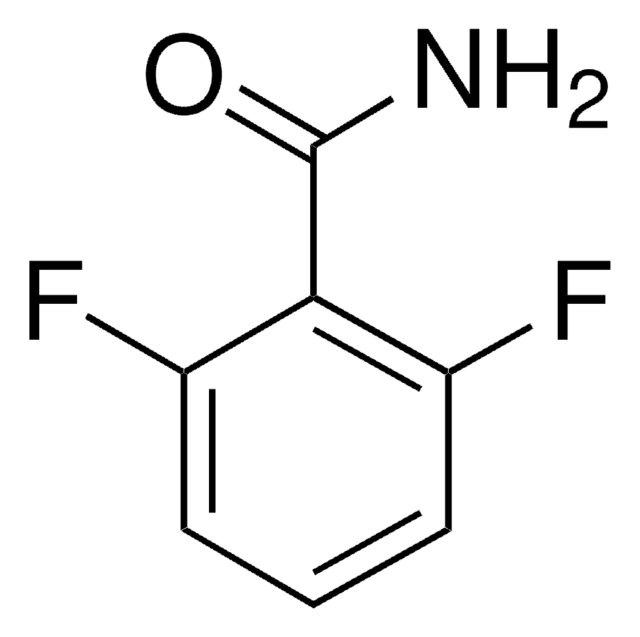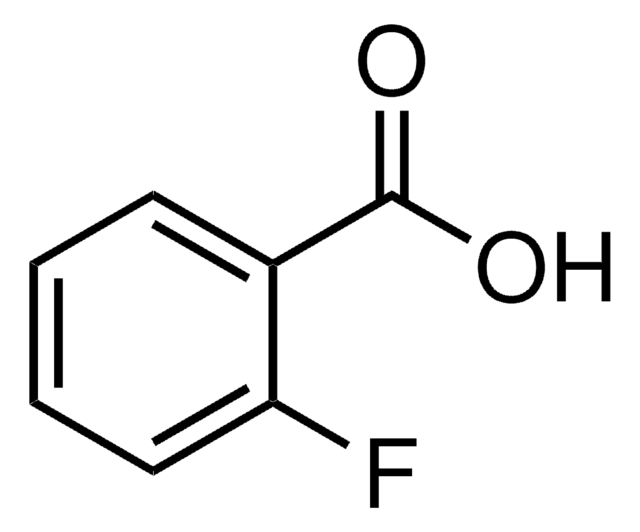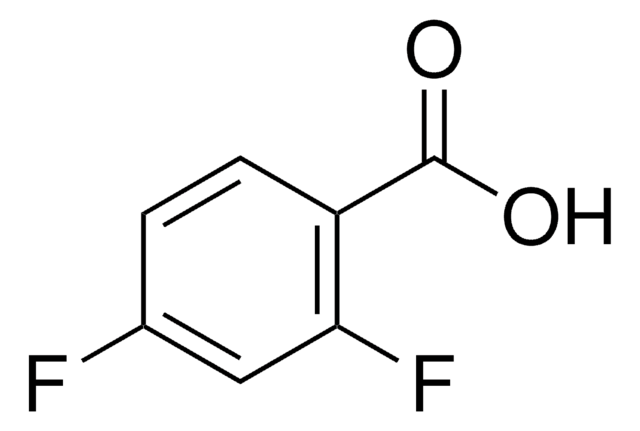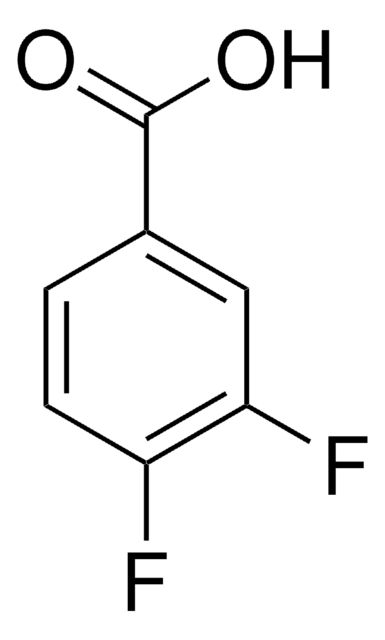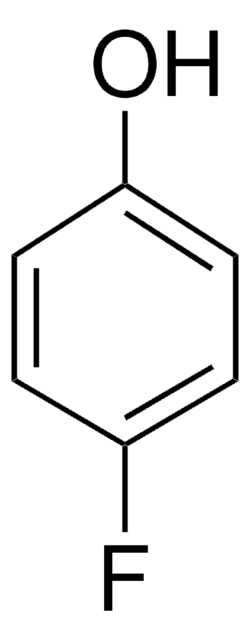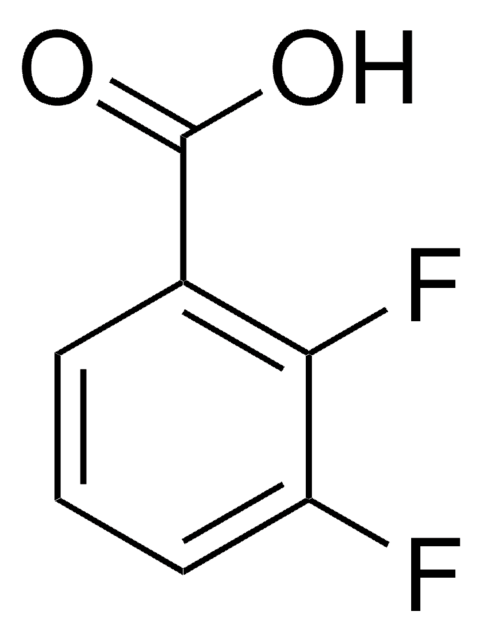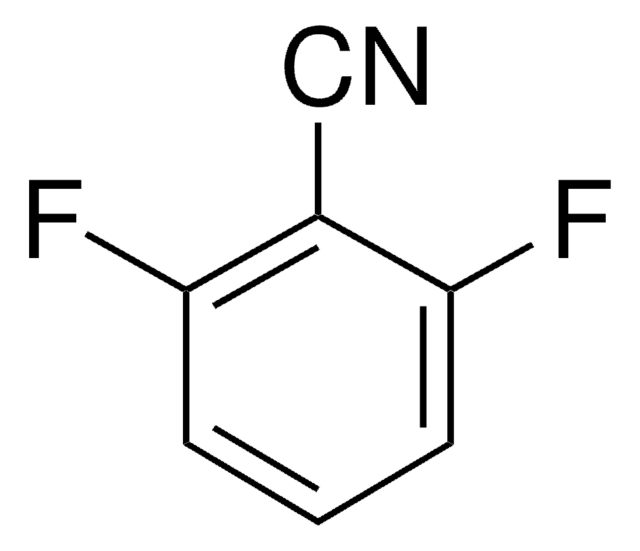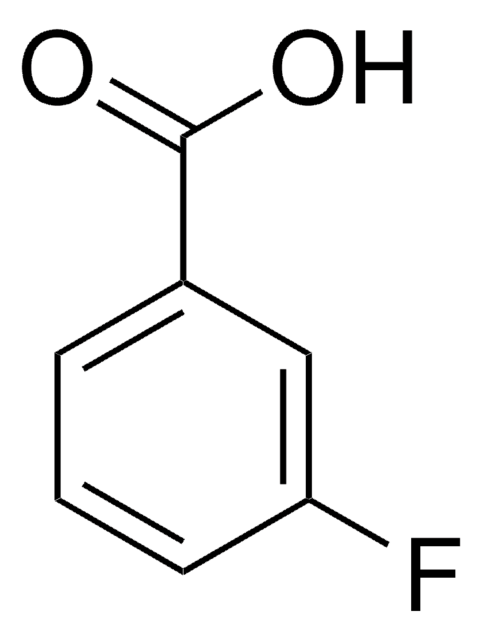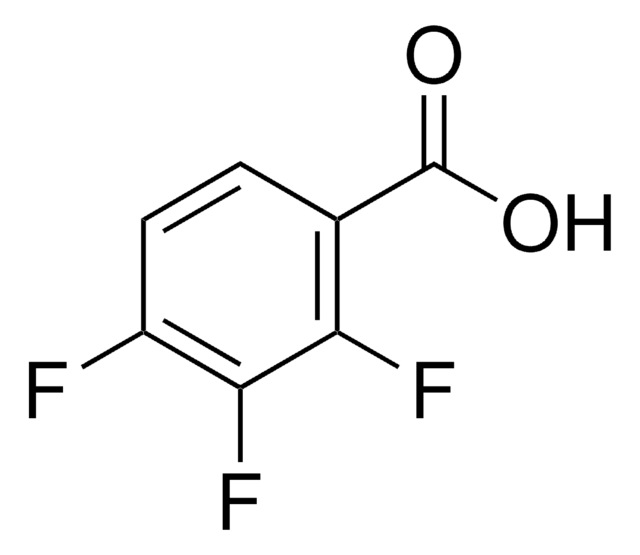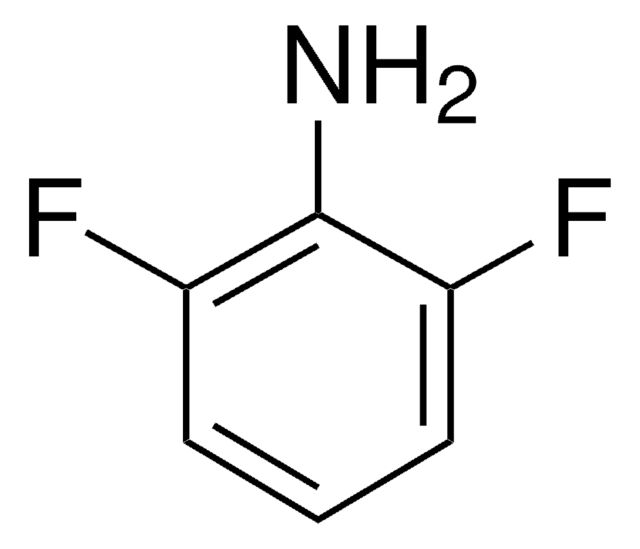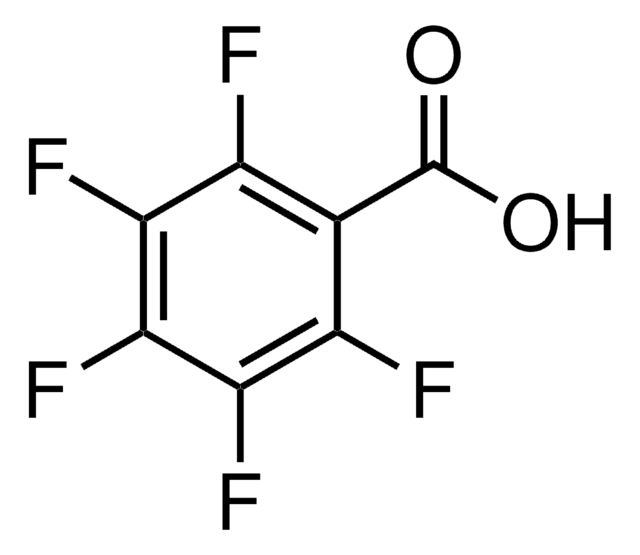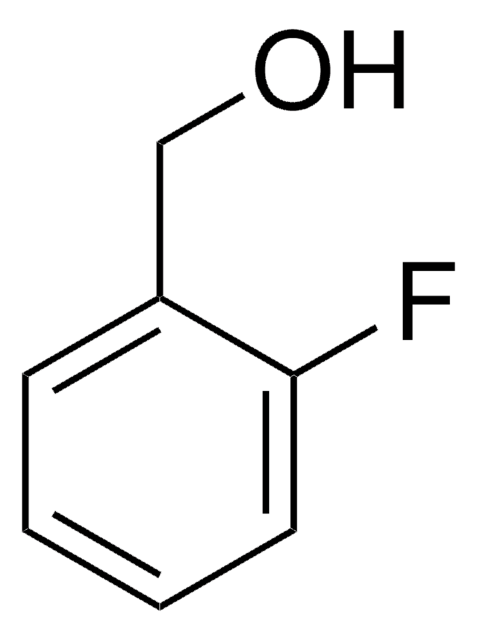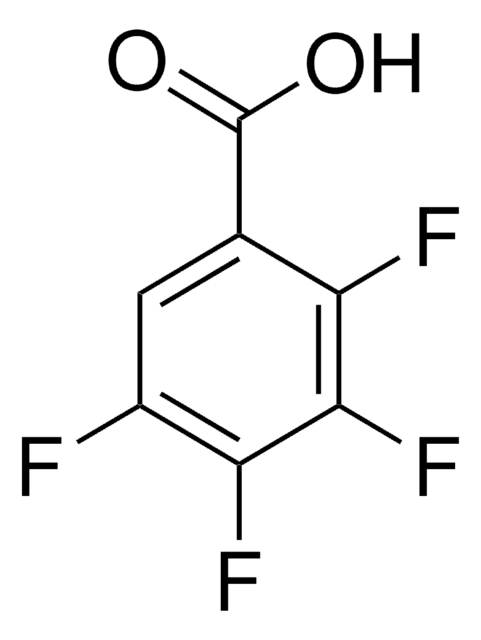190039
2,6-Difluorobenzoic acid
98%
Autenticatiper visualizzare i prezzi riservati alla tua organizzazione & contrattuali
About This Item
Formula condensata:
F2C6H3CO2H
Numero CAS:
Peso molecolare:
158.10
Beilstein:
973774
Numero CE:
Numero MDL:
Codice UNSPSC:
12352100
ID PubChem:
NACRES:
NA.22
Prodotti consigliati
Livello qualitativo
Saggio
98%
Stato
solid
Punto di fusione
157-161 °C (lit.)
Stringa SMILE
OC(=O)c1c(F)cccc1F
InChI
1S/C7H4F2O2/c8-4-2-1-3-5(9)6(4)7(10)11/h1-3H,(H,10,11)
ONOTYLMNTZNAQZ-UHFFFAOYSA-N
Cerchi prodotti simili? Visita Guida al confronto tra prodotti
Categorie correlate
Descrizione generale
2,6-Difluorobenzoic acid is the major degradation product of diflubenzuron.
Applicazioni
2,6-Difluorobenzoic acid has been used in the synthesis of 2,6-difluoro-N-(3-methoxy-1H-pyrazolo[3,4-b]pyridine-5-yl)-3-(propylsulfonamidio)benzamide and methyl 2,6-difluorobenzoate.
Avvertenze
Warning
Indicazioni di pericolo
Consigli di prudenza
Classi di pericolo
Eye Irrit. 2 - Skin Irrit. 2
Codice della classe di stoccaggio
11 - Combustible Solids
Classe di pericolosità dell'acqua (WGK)
WGK 3
Punto d’infiammabilità (°F)
Not applicable
Punto d’infiammabilità (°C)
Not applicable
Dispositivi di protezione individuale
dust mask type N95 (US), Eyeshields, Gloves
Scegli una delle versioni più recenti:
Possiedi già questo prodotto?
I documenti relativi ai prodotti acquistati recentemente sono disponibili nell’Archivio dei documenti.
I clienti hanno visto anche
E Gattavecchia et al.
Journal of environmental science and health. Part. B, Pesticides, food contaminants, and agricultural wastes, 16(2), 159-166 (1981-01-01)
Diflubenzuron (I) and its major degradation products 4-chlorophenyl urea (II), 2,6-difluorobenzoic acid (III) and 4-chloroaniline (IV) were tested for their activity on Euglena gracilis Z. The inhibition on the growth and on the incorporation of glycine-U-14C in the protein of
Li Chen et al.
Journal of agricultural and food chemistry, 53(1), 38-41 (2005-01-06)
Two series of benzoylphenylurea derivatives were synthesized as candidate propesticides by a nucleophilic addition reaction between 2,6-difluronbenzoyl isocyanate and N-substitutedaniline. The new compounds were identified by 1H NMR spectroscopy, electron ionization-mass spectrometry, and elemental analyses. The bioactivities of the new
A Karipides et al.
Acta crystallographica. Section C, Crystal structure communications, 48 ( Pt 6), 1015-1018 (1992-06-15)
Ca2+.2C7H3O2F2-.2H2O, M(r) = 390.3, monoclinic, C2/c, a = 17.584 (4), b = 10.771 (3), c = 7.887 (2) A, beta = 91.28 (2) degrees, V = 1493 A3, Z = 4, Dm = 1.75, Dx = 1.74 g cm-3, lambda(Mo
Min Wang et al.
Bioorganic & medicinal chemistry letters, 23(4), 1017-1021 (2013-01-09)
The authentic standard 2,6-difluoro-N-(3-methoxy-1H-pyrazolo[3,4-b]pyridine-5-yl)-3-(propylsulfonamidio)benzamide was synthesized from 2,6-difluorobenzoic acid and 3-amino-5-hydroxypyrazole in 9 steps with 1% overall chemical yield. Direct desmethylation of the reference standard with TMSCl/NaI gave the precursor 2,6-difluoro-N-(3-hydroxy-1H-pyrazolo[3,4-b]pyridine-5-yl)-3-(propylsulfonamidio)benzamide for radiolabeling in 70% yield. The target tracer 2,6-difluoro-N-(3-[(11)C]methoxy-1H-pyrazolo[3,4-b]pyridine-5-yl)-3-(propylsulfonamidio)benzamide
J Koerts et al.
Xenobiotica; the fate of foreign compounds in biological systems, 27(8), 801-817 (1997-08-01)
1. The metabolic fate of the insecticide teflubenzuron, orally dosed to the male Wistar rat, was investigated. Particular attention was paid to the metabolic fate of the benzoyl and aniline moiety after hydrolysis of the urea bridge. 2. The 0-48-h
Il team dei nostri ricercatori vanta grande esperienza in tutte le aree della ricerca quali Life Science, scienza dei materiali, sintesi chimica, cromatografia, discipline analitiche, ecc..
Contatta l'Assistenza Tecnica.